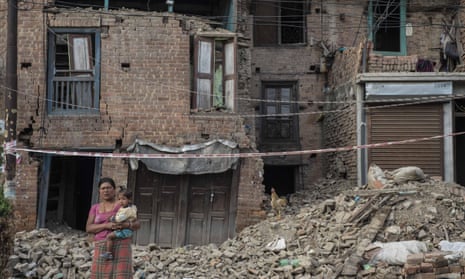Record cuts outlined in the 2015 federal budget will see Australia’s foreign aid relative to income fall to the lowest levels since the creation of a formal aid program more than 40 years ago.
Australia’s foreign aid budget was cut by $1bn this financial year and will be cut again each year until 2017-18. These cuts were announced prior to the budget, in the last mid-year economic and fiscal outlook (Myefo).
According to the “generosity index” compiled by Stephen Howes, a development economist at the Australian National University, by 2017-18 Australia’s budget would be the least generous in the history of the country’s formal aid program, with a ratio of 0.21. The generosity index measures aid relative to gross national income (GNI):
In contrast, Australia’s score was 0.34 in 2012-13 and sat at 0.42 20 years ago.
Howes said Australia had become an “aid laggard” among developed countries.
“Aid has been singled [out] and no other sector has received cuts like this,” he said. “We’re still seeing growth in most areas of expenditure but this sharp contraction in aid.”
Australia’s aid cuts also show a shift in spending geographically, with countries in the Pacific either escaping cuts (in nominal terms) or only facing small reductions in aid.
Indonesia’s official development assistance from Australia has been reduced from $542.5m to $323m, but the government says it is not because of the executions last month of two Australian drug smugglers.
“There wasn’t any specific targeting of any country at all, it was all done with a formula,” Joe Hockey said.
As far as we can tell, the formula is to make the same percentage cuts to countries in the same region, but with some exceptions. Essentially, if you draw a line down the centre of Australia, countries to the right in the Pacific have mostly escaped cuts, while countries to the left have had their aid reduced.
Aid to countries in Asia has been cut in the vicinity of 40%, with the exceptions of Cambodia, with which Australia has a deal to resettle refugees intercepted in Australian waters, and Nepal, recently hit by a devastating earthquake.
Further west, aid funds to the Middle East and Africa have been cut the most, with a reduction of 82.1% across the Middle East and north Africa, and a reduction of 70% for sub-Saharan Africa.
Howes said the human impact of the cuts would become known as programs are scaled back or cancelled in the coming months. Among the organisations to take a hit was Unicef, which had its funding reduced by about 40%.
“They provide support and medical treatment for children, so that will almost certainly go missing,” he said.
“There will also be far fewer volunteers going overseas, because the volunteer program has been cut by 30%, so that’s less opportunity for Australians to engage with Asia and lend practical help.”
The government had promised to increase aid in line with inflation, but the treasurer, Joe Hockey, has said the money is needed to fund investment in infrastructure at home.
Howes said Australians needed to understand that giving aid was in the country’s national interest.
“Whether it’s Ebola or natural disasters or working on education in Indonesia, which we want to do, we don’t have any option really but to use our aid. There aren’t good substitutes for it,” he said.
Internationally, as of 2014, Australia’s aid funding as a proportion of national income put us in the middle of OECD countries, around the 13th most generous out of the 28 countries for which the OECD maintains aid spending statistics:
Once Australia’s aid spending is reduced, the ranking could fall as far as 20th, depending on the funding trajectory and economic conditions of other OECD countries.
Here’s the full breakdown of the cuts by country announced in the 2015 budget:
This article includes content hosted on d26adhsj11a4c2.cloudfront.net. We ask for your permission before anything is loaded, as the provider may be using cookies and other technologies. To view this content, click 'Allow and continue'.

Comments (…)
Sign in or create your Guardian account to join the discussion